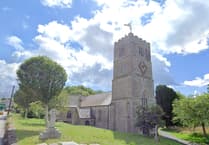WHEN Liskeard Railway Station opened in 1859, giving direct access to Plymouth and London in the East and Truro and Penzance in the West, across the country local time had to be adjusted to match the Cornish Railway’s Timetable.
In Liskeard this involved all clocks and watches being put forward by 20 minutes. Another change was that Lamellion Street, which connected the town to the Wool Mill at the bottom of Lamellion Hill, became Station Road.
The amount of traffic coming from and going to the new station increased drastically. The sharp right-hand bend, to access Station Road from Dean Street and Barras Street, was difficult to negotiate and resulted in numerous complaints and several accidents. Local architect and surveyor Henry Rice proposed a solution, cut a new direct link from Barras Street to Barn Street and on to Station Road, avoiding Bay Tree Hill completely.
The town council agreed to Rice’s proposal and on April 27, 1863 posters appeared around the town and in newspapers inviting ‘Persons Disposed to Contract for making the New Road from the South End of Barras Street to Mr Blamey’s Wool Store in Barn Street, may inspect the Plan and Specification of the proposed work at the Office of Mr H Rice, Green Bank Lane, Liskeard.’ The work also involved the taking down of Mr Blamey’s store and the re-building of it much further back, away from the new road. The Mason’s work amounted to £190 18s 6d, and the Carpenter’ work was £198 16s 3d.
The new road was named Windsor Place. Other changes to road names about the same time were Barrell Street to Barras Street, Bull Post to the Parade, Market Street to Fore Street, and Honey Fair to Bay Tree Hill.
By Brian Oldham, Liskeard Museum volunteer and Bard of the Gorsedh Kernow





Comments
This article has no comments yet. Be the first to leave a comment.